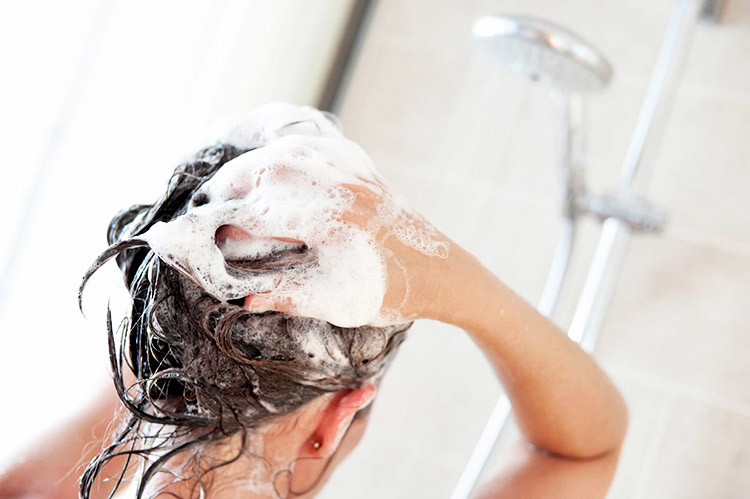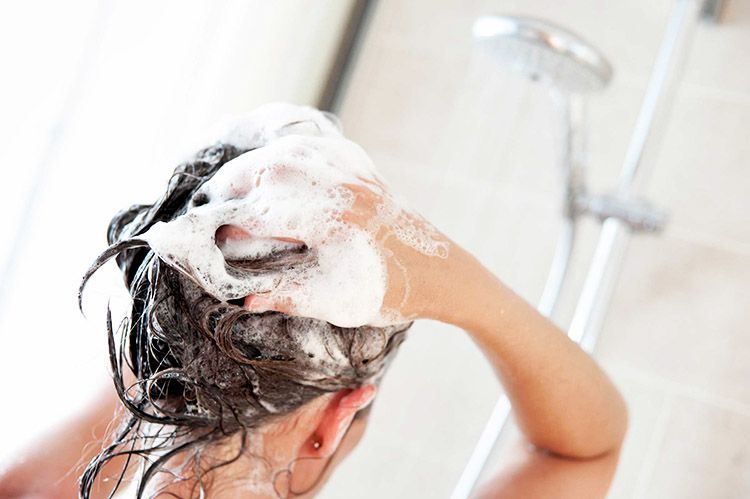

Many Americans are working to reduce their exposure to harmful chemicals and toxic ingredients. Few industries have faced more criticism for their ingredients than the cosmetics industry and lately, it seems that more and more brands are releasing organic or all-natural personal care lines.

Shampoos and conditioners, in particular, contain a lot of toxic ingredients. Some health-conscious consumers have taken to making their own haircare products, but others still prefer to use ready-made, expert-developed shampoos and conditioners. If this is you, rest assured that you have plenty of options. You don’t necessarily have to spend a fortune, either. A quick glance at a product’s ingredient list can tell you a lot about its safety.
Here are five toxic ingredients you’ll want to be sure to avoid when picking out a shampoo or conditioner:
1. Sulfates
You’ve probably heard of sulfates by now; pretty much every natural hair care brand states proudly on its packaging that a product is sulfate-free. But what are sulfates and why should you avoid them?
The main thing to keep in mind when thinking about sulfates is that they are chemical detergents. That in itself isn’t necessarily a bad thing, but it means that sulfates are extremely effective at removing dirt and oil … in fact, they’re a little too effective. Sulfates are harsh on the hair and scalp, so they can strip away that natural moisture that keeps your hair shiny and soft.
On a deeper level, they may carry some hormone-disrupting agents along with them. According to Natural Society, many sulfates contain traces of dioxane, a known carcinogen. Dioxane is also thought to disrupt kidney function.
2. Parabens
Parabens are another widely hated group of chemicals that you’ve probably been told to avoid in your beauty and personal care products. Parabens are xenoestrogens, which means that they have a similar composition to hormones found in the human body. Xenoestrogens are thought to disrupt hormones and could even pose a cancer risk.
Real Simple even noted that British scientists found evidence of parabens in samples of breast cancer tissue. Though this doesn’t necessarily mean the parabens caused the cancer, most natural-minded folks try to avoid parabens completely.
3. Fragrance
Fragrances are bad, bad, bad. If the fragrance in your product comes from a natural essential oil, it will say so on the packaging. If all the manufacturers have chosen to tell you about the ingredient is that it’s a “fragrance,” that’s generally bad news.
The term “fragrance” allows manufacturers to opt out of including a list of the ingredients used to create that fragrance, as the term is not regulated by the U.S. Food and Drug Administration. So really, if “fragrance” is listed on an ingredient list, there’s no telling what’s in there. Natural Society even notes that there are more than 3,100 chemicals used by the fragrance industry to concoct these suspicious-sounding additions to your shampoos and conditioners.
4. Triclosan
Triclosan is an antibacterial agent that’s often added to personal care products as a preservative. Dr. Ben Kim notes that we still don’t have enough conclusive evidence to say for sure whether or not triclosan is safe for use, but there have certainly been some warning signs to the contrary.
Triclosan is thought to be an endocrine disruptor, which means it can be harmful in the same fashion as xenoestrogens. It’s also been linked to immune system problems, weight loss and uncontrolled cellular reproduction, according to Dr. Kim.
5. Polyethylene Glycol
Polyethylene glycol or PEG, is also thought to interfere with the body. According to Natural Society, the state of California has classified the chemical as a “developmental toxicant,” which means that it may interfere with human development. It’s also known to be contaminated by the aforementioned cancer-causer dioxane.
If you’re looking for shampoos and conditioners that are made with safe, reliable, natural ingredients, you have lots of options at your fingertips. And if you’re feeling more adventurous, of course, you could always try making your own homemade hair care products.
YOU MIGHT ALSO LIKE
Buyer Beware: You Might Be Eating Food From Cans Lined With Toxic BPA
5 Common Houseplants That Clean the Air for a Healthier Home
Want to Buy Non-Toxic Products? Look for One of These Five Labels
Exclusive Interview: Pro Surfer Cyrus Sutton Develops Sunblock Safe for People and the Planet

 233k
233k  41k
41k  Subscribe
Subscribe 